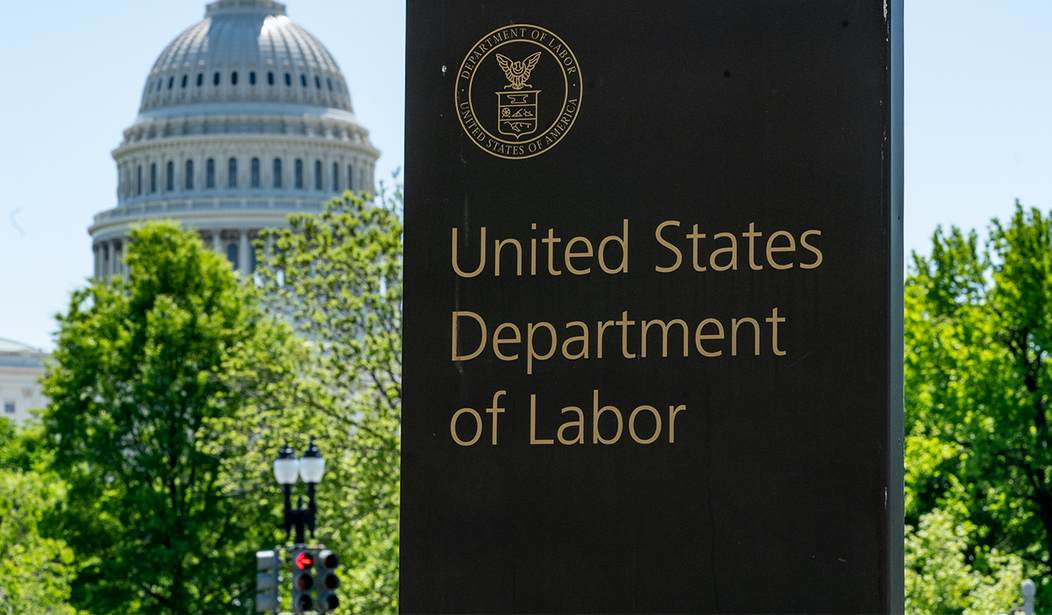How many times did Democrats lecture ordinary Americans during the campaign about "the best economy in a generation?" They pointed to statistic after statistic, proving their point.
According to the Bureau of Labor Statistics (BLS), we had virtually full employment. According to the Consumer Price Index (CPI), inflation was well under control. According to the Federal Reserve, the Gross Domestic Product (GDP) was growing excellently.
But the American people weren't judging the economy's health based on government statistics. They knew how good the economy was doing based on their own set of statistics: How much were they spending on food? What percentage of their take-home pay was for rent or the mortgage? Was there any money left over to save for the future?
This is what Kamala Harris, Joe Biden, and Democrats who actually got angry at ordinary Americans for not seeing how good they had it never realized. The books weren't "cooked;" rather, as Eugene Ludwig, former comptroller of the currency under Bill Clinton, points out, the statistics don't correctly "capture the realities defining unemployment, wage growth and the strength of the economy as a whole." Ludwig writes in Politico:
These numbers have time and again suggested to many in Washington that unemployment is low, that wages are growing for middle America and that, to a greater or lesser degree, economic growth is lifting all boats year upon year. But when traveling the country, I’ve encountered something very different. Cities that appeared increasingly seedy. Regions that seemed derelict. Driving into the office each day in Washington, I noted a homeless encampment fixed outside the Federal Reserve itself. And then I began to detect a second pattern inside and outside D.C. alike. Democrats, on the whole, seemed much more inclined to believe what the economic indicators reported. Republicans, by contrast, seemed more inclined to believe what they were seeing with their own two eyes.
Ludwig decided to do something about the flawed analyses. There had to be a better way to realistically gauge the true economic impact of inflation, unemployment, and GDP that would make sense to middle and lower-class Americans.
Ludwig assembled a team to do a deep dive into economic statistics, and what they found was astonishing. "The bottom line is that, for 20 years or more, including the months prior to the election, voter perception was more reflective of reality than the incumbent statistics," Ludwig wrote.
If you filter the statistic to include as unemployed people who can’t find anything but part-time work or who make a poverty wage (roughly $25,000), the percentage is actually 23.7 percent. In other words, nearly one of every four workers is functionally unemployed in America today — hardly something to celebrate.
It's not "cooking the books" if the methodology sucks. And hidebound bureaucracies hate to change their methodology because "this is the way we've always done it."
A similar calculation error led to a grossly inaccurate number when calculating earnings.
The picture is similarly misleading when examining the methodology used to track how much Americans are earning. The prevailing government indicator, known colloquially as “weekly earnings,” tracks full-time wages to the exclusion of both the unemployed and those engaged in (typically lower-paid) part-time work. Today, as a result, those keeping track are led to believe that the median wage in the U.S. stands at roughly $61,900. But if you track everyone in the workforce — that is, if you include part-time workers and unemployed job seekers — the results are remarkably different. Our research reveals that the median wage is actually little more than $52,300 per year. Think of that: American workers on the median are making 16 percent less than the prevailing statistics would indicate.
Finally, the CPI would seem to include a comprehensive look at prices. The "market basket" of goods that the government bases its inflation number on tracks the prices charged for 80,000 goods and services across the economy.
The only problem is that middle and lower-class Americans only buy a fraction of those 80,000 products. "If prices for eggs, insurance premiums and studio apartment leases rise at a faster clip than those of luxury goods and second homes, the CPI underestimates the impact of inflation on the bulk of Americans. That, of course, is exactly what has happened," writes Ludwig.
Related: Inflation Heats Up in January as Powell's Disastrous Interest Rate Policy Is Exposed
Ludwig and his team created another inflation calculator that reached a much different conclusion. By excluding luxury items and goods that are purchased mainly by the wealthy, he was able to come up with a much more accurate measurement of prices.
The effect, of course, was particularly intense in the wake of the pandemic. In 2023 alone, the CPI indicated that inflation had driven prices up by 4.1 percent. But the true cost of living, as measured by our research, rose more than twice as much — a full 9.4 percent. And that laid bare the oft-quoted riposte that wage gains outpaced inflation during the crisis following COVID-19. When our more targeted measure of inflation is set atop our more accurate measure of weekly earnings, it immediately becomes clear that purchasing power fell at the median by 4.3 percent in 2023. Again, whatever anyone may have claimed from the prevailing statistics during the run-up to the 2024 election, reality was drastically more dire for the great majority of Americans.
The methodology used to calculate the government statistics rarely changes. What may have been relevant 20 or 30 years ago has been superseded by reality. The government would do well to alter its methodology to reflect how things are today.










Join the conversation as a VIP Member